Invasive Species in the Great Lakes
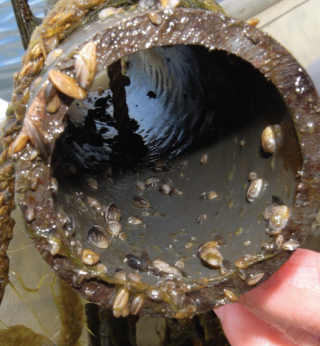
Invasive species are non-native plants and animals whose introduction causes harm to the economy, environment, or human health. Non-native species originate outside the Great Lakes basin and are introduced into the basin due to deliberate or accidental human activities. Of the over 180 established aquatic non-native species in the Great Lakes basin, 34% are considered invasive. Infamous Great Lakes invaders include the Sea Lamprey, Zebra and Quagga Mussels, Round Goby, and Phragmites.
Invasive species are significant and immediate threats to the ecosystems and economies of the Great Lakes basin. With no natural predators or controls in their new ecosystem, invasive species outcompete native species, degrade habitat, alter the food web, and threaten the diversity or abundance of native species. By decreasing the populations of native fish and other species and decreasing the ecosystem’s aesthetic value, invasive species can adversely impact basin-wide or local economies that depend on a healthy and diverse ecosystem for recreation, sport and commercial fishing, and tourism. Read more about establishment of invasive species and their impacts in the 2022 State of the Great Lakes Report and get the latest information on non-native species found in the Great Lakes in the Great Lakes Aquatic Nonindigenous Species Information System (GLANSIS).
What is EPA doing to address invasive species in the Great Lakes?
Through the Great Lakes Restoration Initiative (GLRI), EPA and other federal and state partner agencies have accelerated efforts to protect and restore the largest system of fresh surface water in the world – the Great Lakes. Since GLRI began in 2010, GLRI agencies and their partners have continued diligent efforts to prevent new introductions of invasive species in the Great Lakes ecosystem and to control existing invasive species populations. GLRI provides significant resources and funding to address invasive species in the Great Lakes, sets aggressive and ambitious annual goals and metrics, and encourages strong interagency coordination.
Read about specific GLRI accomplishments featured in Reports to Congress or visit the GLRI news page for the latest success stories.
GLRI federal agencies collaborate with state, tribal, and local partners in the following three areas:
- Prevent Introductions of New Invasive Species
- Control Established Invasive Species
- Innovation and Collaboration
Prevention
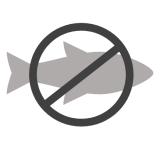
GLRI federal agencies and partners are working with Great Lakes states and tribes to prevent introductions of new invasive species. Because the Great Lakes can be a freshwater invasion pathway to the 31 states within the Mississippi River watershed and beyond, these prevention efforts will also benefit the entire nation.
GLRI federal agencies and partners are taking the following actions:
-
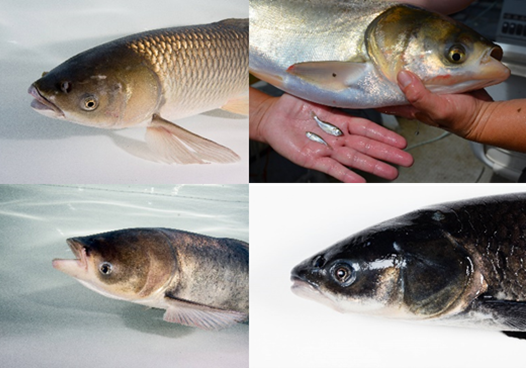
The four species of invasive carp that are closely monitored for introduction and spread due to their threat to the Great Lakes basin. From top left, clockwise: grass carp, silver carp, black carp, and bighead carp. - Managing the potential pathways for invasive species introduction into the Great Lakes ecosystem, including continuing extensive efforts to prevent invasive carp from becoming established in the Great Lakes ecosystem. Through contract fishing on the Illinois River, continued operation, and modernization of barriers on the Chicago Area Waterway System (CAWS), and eDNA surveillance in strategic locations across the Great Lakes, federal and state fishery agencies have prevented bighead, silver, and black carp from establishing in the Great Lakes. They also monitor vectors likely to be contributing to the introduction or spread of invasive species, including ballast water operations.
- Conducting early detection and surveillance activities for non-native species and working collaboratively with federal, state, local, and tribal agencies to develop criteria for prioritizing and distributing monitoring efforts. Broad monitoring across lakes and targeted monitoring at high-risk locations help first detect, then allow for possible interception of invasive species before populations establish. EPA's Great Lakes Biology Monitoring Program also searches for new aquatic non-native species within the zooplankton, phytoplankton, and benthic communities of the Great Lakes, helping to identify newly introduced species even when they are at low abundances.
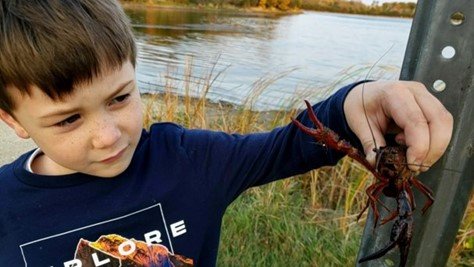
New red swamp crayfish detection in Illinois, 2020.
Control

Once an introduced non-native species successfully reproduces and becomes established in abundance within an ecosystem, the ultimate (and most costly and time intensive) management option is to try to control the existing population of the invader and adaptively manage the resultant ecosystem impacts as much as possible. GLRI federal agencies and partners implement control projects for GLRI-targeted invasive species and provide support to state priority invasive projects. Controlling an invasive species like Sea Lamprey helps other GLRI actions succeed, such as restoration of native fish species.
Visit Great Lakes Established Invasive Species slideshow.
Innovation and Collaboration

Development of effective control technologies to aid in the control of invasive species in the Great Lakes:
One of the longest-running and most effective invasive species control technology programs is the Sea Lamprey control program. Its success is largely due to a multi-year effort to test almost 6,000 chemical compounds to identify the compound that most effectively suppresses larval Sea Lamprey populations and interrupts their life cycle without harming other species. GLRI federal agencies and their partners continue to pilot new advances in the control of other life stages of Sea Lamprey and develop targeted control methods for other Great Lakes invasive species.
Development and enhancement of invasive species collaboratives that support rapid responses and communicate the latest control and management techniques, including:

The Invasive Mussel Collaborative provides a framework for communication and coordination between a broad membership base of states, provinces, tribal, and other entities to determine management objectives for invasive mussels and identify and guide research needed to achieve those objectives.
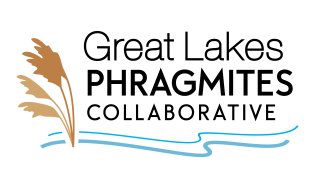
The Great Lakes Phragmites Collaborative links people, information, and action on Phragmites – an aggressive non-native species which has invaded an estimated 60,000 acres of shoreline habitat and innumerable inland areas across the Great Lakes region.
